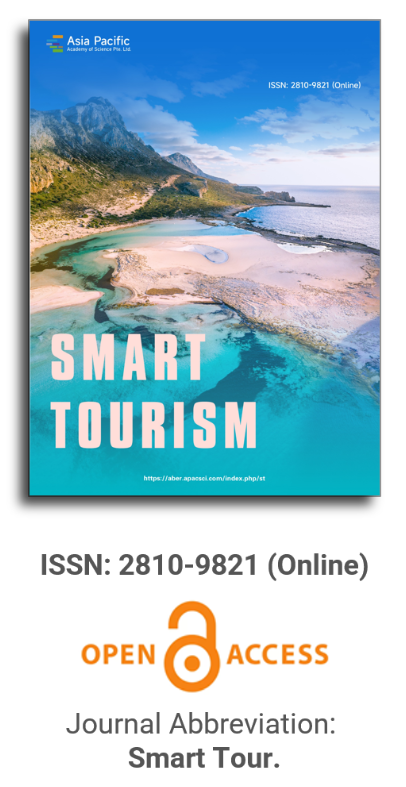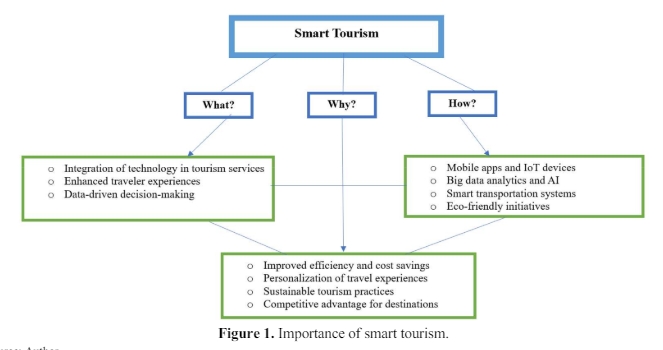


Assessment of the resilience of urban tourism flow network structure based on the impact of COVID-19: A case of Chongqing
Vol 3, Issue 2, 2022
Download PDF
Abstract
Based on the change data of network comments of tourist attractions in the central urban area of Chongqing from 2019 to 2021, the urban tourism flow network of Chongqing before and after the epidemic was constructed in stages based on the gravity model. And from the three dimensions of resistance, resilience and adaptability, the six measurement indicators of network load, stability, growth, hierarchy, matching and transmission are evaluated. The results show that: 1) Although the comprehensive indicator of network load of urban tourism flow in Chongqing is seriously impacted by the COVID-19 pandemic, the network structure of tourism flow has obvious resilience in the indicators of stability and growth. 2) COVID-19 helps to force the optimization of tourism flow network structure. The hierarchy of the urban tourism flow network structure in Chongqing tends to be flat, and the indicator of assortative shows obvious heterogeneity characteristics. 3) Transmission is a weak link in the network structure of urban tourism flow in Chongqing, which needs to be further optimized.
Keywords
References
- Holling CS. Resilience and stability of ecological systems. Annual Review of Ecology and Systematics 1973; 4(4): 1–23.
- Maguire B, Hagan P. Disasters and communities: Understanding social resilience. Australian Journal of Emergency Management 2007; 22(2): 16–20.
- Martin R. Regional economic resilience, hysteresis and recessionary shocks. Journal of Economic Geography 2012; 12(12): 1–32.
- Pendall R, Foster KA, Cowell M. Resilience and regions: Building understanding of the metaphor. Cambridge Journal of Regions Economy & Society 2010; 3(1): 71–84.
- Mebarki A. Resilience: Theory and metrics—A metal structure as demonstrator. Engineering Structures 2017; 138: 425–433.
- Eraydin A, TaŞan-Kok T. Resilience thinking in urban planning. New York, USA: Springer; 2012.
- Tan J, Zhao H, Liu W, et al. Regional economic resilience and influential mechanism during economic crises in China. Scientia Geographica Sinica 2020; 40(2): 173–181.
- Liu P, Zhu Z, Zeng Z, et al. Perspectives on tourism regional resilience research in the post-COVID-19 era. Modern Urban Research 2021; (5): 19–26.
- Sun J, Sun X. Research progress of regional economic resilience and exploration of its application in China. Economic Geography 2017; 37(10): 1–9.
- Wei Y, Xiu C. Study on the concept and analytical framework of city network resilience. Progress in Geography 2020; 39(3): 488–502.
- Bennett EM, Cumming GS, Peterson GD. A systems model approach to determining resilience surrogates for case studies. Ecosystems 2005; 8(8): 945–957.
- Martin R. Regional economic resilience, hysteresis and recessionary shocks. Journal of Economic Geography 2012; 12(12): 1–32.
- Mcinroy N, Longlands S. Productive local economies: Creating resilient place. Manchester, UK: Centre for Local Economic Strategies; 2010. p. 65– 66.
- Peng C, Lin Y, Gu C. Evaluation and optimization strategy of city network structural resilience in the middle reaches of Yangtze River. Geographic Research 2018; 37(6): 1193–1207.
- Fang Y, Su X, Huang Z, et al. Structural characteristics and resilience evaluation of tourism flow networks in five major urban agglomerations in coastal China: From the perspective of evolutionary resilience. Economic Geography 2022; 42(2): 203– 211.
- Peng C, Chen S, Wang B. Analyzing city network’s structural resilience under disruption scenarios: A case study of passenger transport network in the middle reaches of Yangtze River. Economic Geography 2019; 39(8): 68–76.
- Xie Y, Wang C, Han Z, et al. Structural resilience evolution of multiple urban networks in the HarbinDalian urban belt. Progress in Geography 2020: 39(10): 1619–1631.
- Crespo J, Suire R, Vicente J. Lock in or lock out? How structural properties of knowledge networks affect regional resilience? Journal of Economic Geography 2013; 14(1): 199–219.
- Burt RS. Toward a Structural Theory of Action. New York: Academic Press; 1982: 128–130.
- Boschma R. Towards an evolutionary perspective on regional resilience. Regional Studies 2015; 49(5): 733–751.
- Li H, Li D, Dong X, et al. Spatial patterns of 5Alevel tourist attractions and their network attention degrees in China. Journal of Arid Land Resources and Environment 2019; 33(10): 178–184.
- Li S, Qiu R, Chen L. Cyberspace attention of tourist attractions based on Baidu index: Temporal distribution and precursor effect. Geography and Geo-Information Science 2008; 24(6): 102–107.
- Liu Z, Dai Z, Lou J, et al. Temporal and spatial characteristics of urban recreation behavior based on digital footprints—A case study of Shanghai. World Regional Studies 2019; 28(5): 95–105.
- Han D, Huang L. Study on the structure of tourism flow based on tourism digital footprints—A case Inner Mongolia Autonomous Region. Journal of Arid Land Resources and Environment 2018; 32(3): 192–197.
- Wu Z, Liu J, Yuan J. Network analysis and evolutionary studies based on tourist flows of mainland residents’ self-service traveling in Taiwan. Tourism Tribune 2016; 31(10): 116–124.
- Wei H, Dai Z, Xu X, et al. The impact of Shanghai Disneyland on Shanghai’s tourist flow network: From the perspective of tourists’ digital footprints on the Lvmama website. Tourism Tribune 2018; 33(4): 33–45.
- Yang X, Gu C, Wang Q. Study on the driving force of tourist flows. Geographical Research 2011; 30(1): 23–36.
- Lu X, Chen X, Ma B. Tourism flow scales and potentials among northeast Asian countries. Journal of Arid Land Resources and Environment 2015; 29(11): 208–213.
- Xu D, Wang Q, Zhang J, et al. Research on characteristics of urban tourism flow in multi-time scale based on big data: A case study of Nanjing. Modern Urban Research 2020; (1): 113–121.
- Yang G, Zhong Y, Wang L, et al. A study on spatial diffusion direction and paths of tourist flow in Sichuan Province. Progress in Geography 2008; 27(1): 56–63.
- Liu J. Lectures on whole network approach. Shanghai: Truth & Wisdom House; 2009. p. 54–153.
- Tang C, Zhang H, Zhao L, et al. Discussion on the impact of COVID-19 on China’s tourism industry and its responses. Journal of Chinese Ecotourism 2022; 12(1): 169–183.
- Li B, Zhang W. Goujian yu changtaihua yiqing fangkong xiangshiying lvyou “yizhong yunxing” moshi (Chinese) [Construction and normalization of epidemic prevention and control to adapt to the tourism “operating in the epidemic” model]. Tourism Tribune 2021; 36(2): 8–10.
- Chen G, Li M. Tourist behavior research related to the COVID-19 pandemic published in Englishlanguage journals: A critical review and reflections. Journal of Chinese Ecotourism 2022; 12(1): 114–124.
- Feng X, Huang Z. Research on tourism behavior intention of tourists under the normal epidemic prevention and control. Journal of Arid Land Resources and Environment 2021; 35(4): 203–208.
- Wang Q, Liu S. Impact of COVID-19 epidemic situation on the travel intention and behavior of domestic tourists. Areal Research and Development 2020; 39(4): 1–5.
Supporting Agencies
Copyright (c) 2022 Zhangjun Wang, Xiaoman Zhou, Zhongquan Fang
License URL: https://creativecommons.org/licenses/by/4.0

This site is licensed under a Creative Commons Attribution 4.0 International License (CC BY 4.0).

Prof. Hung-Che Wu
Nanfang College, Guangzhou
China
Indexing & Archiving
Asia Pacific Academy of Science Pte. Ltd. (APACSCI) specializes in international journal publishing. APACSCI adopts the open access publishing model and provides an important communication bridge for academic groups whose interest fields include engineering, technology, medicine, computer, mathematics, agriculture and forestry, and environment.



.jpg)
.jpg)

.jpg)

